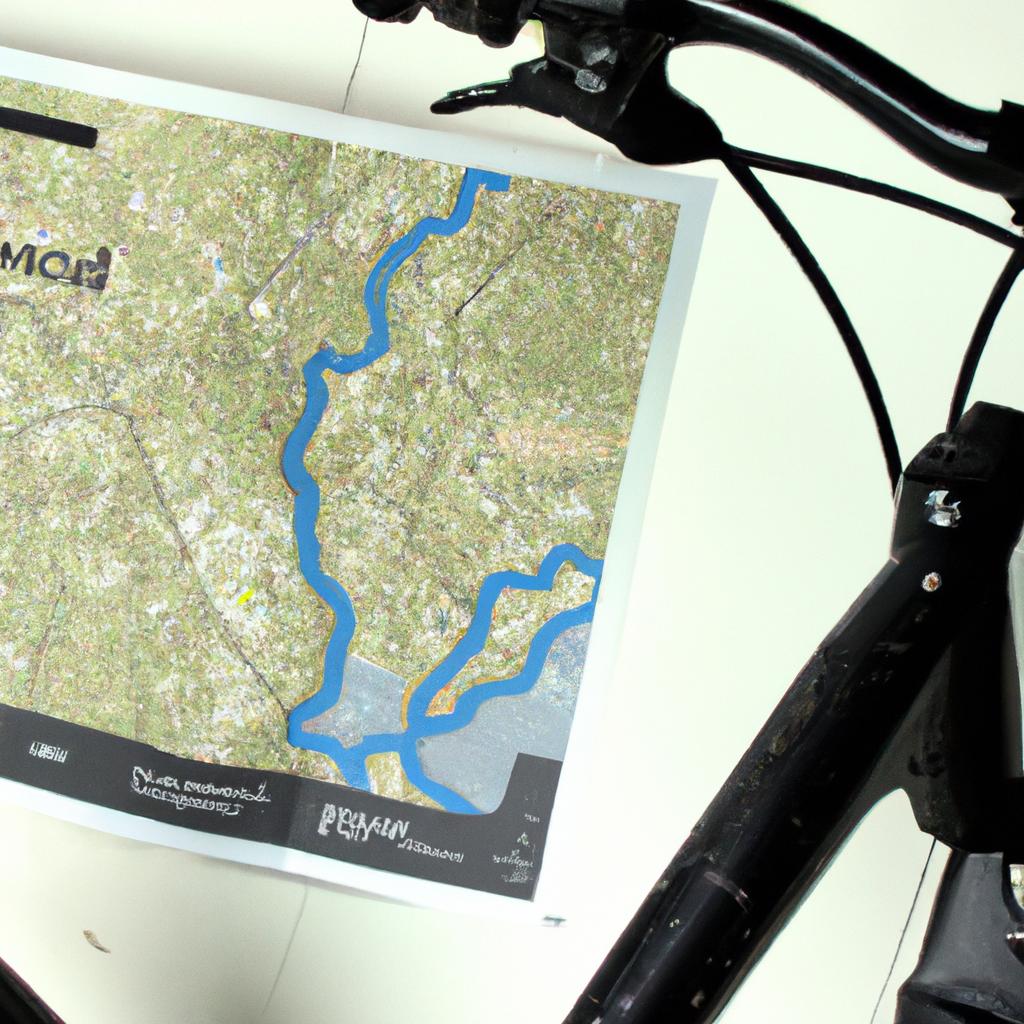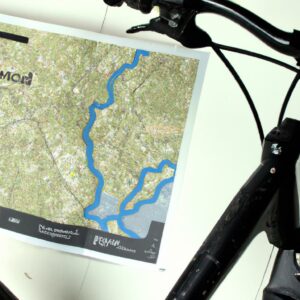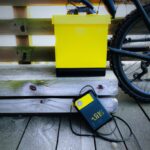Analyzing Your Personal Needs
When deciding on an ebike, it is important to analyze your personal needs. Consider what type of riding you plan to do, and why you want an electric bike. There are many different types of ebikes available, but they all have one thing in common – they use electrical assistance in order to make cycling easier.
Types of ebikes include mountain bikes, city/urban bikes, commuter bikes, folding bikes, cruiser bikes, cargo bikes, and speed/racing bikes. Each type of bike offers its own set of benefits, and it is important to determine what would work best for you.
Do you want an electric bike so that you can cycle further distances with less effort? Or are you looking for something that will provide a boost as you travel around your city? Perhaps you’re looking for something that’s quick, powerful, and capable of tackling rough terrain? Knowing the type of riding you want to do will help you narrow down your choices.
It is also important to consider why you want an electric bike. Are you looking for a greener form of transport? Do you want to save money on travelling expenses? Or do you simply want to enjoy the pleasure of cycling without having to break a sweat? Understanding your motivations will help you decide which type of bike would be most suitable.
Once you have an idea of what type of biking you intend to do, and why you want an electric bike, you can start looking at the various models available. From the most basic designs to the most advanced, there are ebikes to suit all levels of cyclists. By taking into consideration your personal needs and preferences, you can find the perfect ebike for you.
Different Types of Ebikes
If you are considering getting an electric bike, one of the first things you need to decide is what type of ebike is right for you. There are a number of different types available and each has its own advantages and disadvantages. Let’s take a look at some of the ebike types you should consider.
Mountain Ebikes
Mountain ebikes are designed to be taken off-road, they typically have larger tires that can handle more rugged terrain and offer superior traction. These ebikes usually have full suspension which helps to absorb shock from bumps and can give you a smoother ride. They are heavier than other types of ebikes, but that is often necessary to provide better stability and safety on rugged trails.
City/Urban Ebikes
City or urban ebikes are designed for riders who will primarily be using their bike to get around town or on short commutes. These ebikes usually have smaller tires that are optimized for riding on pavement or asphalt. They tend to have a lighter frame and are easier to maneuver in tight places. Some of them come with front and rear lights, racks, and baskets for carrying other items.
Commuter Ebikes
Commuter ebikes are designed for daily rides to work or school. They are similar to city/urban ebikes, but with a longer range and more durable components. Most of these ebikes have a more upright design that keeps you comfortable while riding longer distances. If you plan to ride on bike paths, some models may come with extras such as fenders and lights.
Folding Ebikes
Folding ebikes are designed for riders who don’t have a lot of space for storing their bike. They can easily be folded up and transported with you on public transportation, in your car, or in a closet. Some models even have removable batteries so you don’t have to worry about finding a place to charge them. However, folding bikes can be a bit heavier than other types of ebikes.
Cruiser Ebikes
Cruiser ebikes are designed for comfort and style. These ebikes have a more traditional look and feel, with wide handlebars and a larger seat that gives you a relaxed riding position. They are typically easy to ride and great for leisurely rides down the beach or around town. Cruiser ebikes may come with accessories such as lights and racks.
Cargo Ebikes
Cargo ebikes are ideal for carrying heavy loads. They can be used to haul groceries, equipment, and other items. These ebikes usually feature sturdy frames with additional cargo space, such as racks and baskets on the front and back. Cargo ebikes also have stronger brakes to handle the extra weight.
Speed/Racing Ebikes
Speed/racing ebikes are designed for people who want to go faster. These ebikes usually have thinner, lightweight frames and components to help reduce drag. They also usually have smaller wheels and fewer gears to help you reach higher speeds. Some of these models even have features such as a digital dashboards to monitor your speed and battery life.
Establishing Your Budget
Before you start shopping for an ebike, it’s important to decide on a budget. This will help you narrow down your search, and focus on models that fit within your price range. Typically, the more you spend, the better the quality of the bike, but there are still good deals to be found at all price points.
The cost of ebikes can vary greatly, and can range from around $1000 up to $5000+ depending on the features and type. If you plan to use your ebike every day, you may want to set aside a larger budget so you can get the highest quality you can afford.
Additionally, consider any extra costs that could come up in the future such as repairs, replacements, or upgrades. You may also want to factor in additional accessories such as helmets, lights, fenders, and racks.
Set a realistic budget, and make sure to stick to it. Once you know how much you’re willing to spend, you can start looking for options that meet your needs and fit within that range. Considering your budget from the beginning will help you make the best ebike purchase for you.
Research reputable brands – Check ratings, reviews and customer service responses
When choosing your ideal electric bike (ebike), it is important to do your research and check the ratings, reviews, and customer service of the different brands. This way you’ll be able to find out which brands are more reliable and have better customer service.
It can be quite daunting to figure out which ebike brand to buy. There’s a lot of competition out there, so it’s important to get an understanding of what each brand brings to the table.
First and foremost, look for trusted brands that have been around for some time and have a good reputation in the industry. Try to find out from other customers their experiences with these brands, including their customer service and overall quality of product. Reviews from independent sites are great too as they’ll give you unbiased, honest feedback from people who have actually used the bike.
Be sure to also check on the customer service response. How quickly do they respond to inquiries? Does the company have any kind of warranty in place? If something goes wrong, how efficient and helpful are they in addressing the issue?
It’s also a good idea to read up on the company’s policies. Are they transparent in their policies, such as their return and refund policies? Are their payments secure? Do they use trusted payment gateways?
These are all important things to consider when choosing an ebike brand and looking into their ratings, reviews and customer service responses can help you make the best informed decision and ensure you get the right ebike for your needs.
Choose Your Favorite Style
Electric bikes come in many shapes and sizes, allowing you to choose a style that best suits your needs. Mountain bikes are designed to tackle steep, off-road terrain, while city/urban ebikes feature a step-through frame for easy standing starts.
For those who want to explore more leisurely rides, there are folding and cruiser electric bikes. Folding ebikes are excellent for commuters, offering an easy way to store and transport the bike. Cruiser bikes feature a classic design and low center of gravity, perfect for a relaxed ride.
If you anticipate carrying a lot of baggage on your commute, a cargo ebike is an ideal option. With large platforms on the rear frame and front forks, you can easily transport groceries, books or even a laptop bag. Meanwhile, speed/racing electric bicycles offer higher top speeds, making them great for covering long distances.
No matter what type of ebike you choose, make sure it offers enough flexibility to accommodate your riding style. If you like going off-road, a mountain ebike may be the best choice, while commuters may prefer a city/urban model. Take some time to test ride different styles and find one you love.
Determine Your Battery Size
When you are shopping for an electric bike, one of the most important things to consider is the battery size. Knowing how far you plan to ride and what type of terrain you will be riding on will determine the watt-hours needed for your ebike. The watt-hours (Wh) tell you the total energy stored in a battery and are calculated by multiplying the battery voltage by the amp hours (Ah). (For example, if you have a 48V 10Ah battery, the watt-hours would be 480Wh.)
To calculate the watt-hours needed for your electric bike, you should first consider how far you plan to ride. If you plan to commute to work every day, you may want to opt for a battery with more watt-hours. If you’re just looking for a leisurely ride around town, then a smaller battery might suffice. Additionally, consider the terrain you plan to ride on. If it is hilly or has steep inclines, then you will need a battery with more watt-hours to handle the added strain.
In general, electric bikes are available with a range of battery sizes from 250 Wh to 1,000 Wh+, so there is an option that should work for any rider’s goals and needs. Additionally, some electric bikes offer removable batteries, so you can purchase multiple batteries with different watt-hours and switch them out depending on your activity.
Once you know how much range you need, you can use the battery size calculation to narrow down your choices when shopping for an ebike. Keep in mind that your battery size is just as important as the other components of your electric bike, so make sure to factor it into your decision.
Drive System: Hub Motor or Internally Geared Rear Hub?
A drive system is the part of an ebike that turns pedaling power into electric propulsion. There are two main types of drive systems for ebikes, the hub motor and the internally geared rear hub. Before heading out to buy an ebike, it is important to understand the differences between these two drive systems.
A hub motor is the most common type of drive system found on electric bikes. It is a small motor located in one of the wheels and is connected to the pedals through a chain or belt. The main benefit of a hub motor is its simplicity – once you’ve mounted the motor, you don’t have to worry about replacing the battery or doing any maintenance. The downside is that they can only provide single speed power and can make the bike heavier.
An internally geared rear hub is an alternative to a hub motor. It is a motor located in the rear wheel and is powered by a battery or charge controller. It typically offers three or more speeds, giving you more options when riding. The main drawback is that these systems require more maintenance and can be more expensive to replace.
When choosing between these two drive systems, it is important to consider your intended use for the ebike. If you’re looking for simple and efficient single speed performance, a hub motor may be the best choice. However, if you need more versatility, an internally geared rear hub may be the way to go.
Finally, keep in mind that both types of drive systems come in different sizes and may have different levels of power output. Consider the terrain you will be riding on and the weight of your ebike when selecting a drive system.
Think About the Display Screen
When looking at an eBike, the display screen is something that should not be overlooked. This is the control center of your ride and can range from a basic LCD to a color touchscreen console. It’s important to decide what type of display you would prefer for your riding needs.
If you plan to do simple commutes or recreational rides, then a basic LCD should suffice. These often have a battery indicator, speedometer, odometer, and some settings like assist level. If you’re more tech-savvy and want to keep track of detailed data such as cadence, altitude and power output, then you might want to consider something more advanced.
Advanced ebikes usually come with color touchscreen displays that allow you to view data in real-time and change modes or settings with just a few taps. You can also customize your dashboards with favorites and ride profiles. Some displays have remote access so you can control bike functions from your mobile device when connected to the internet.
It’s also important to consider the type of mount available for the display unit. If you plan to move the display from bike to bike, then your best bet is a removable mount. However, some models are only compatible with certain manufacturers’ mounts, so make sure you check which type of mount is available before you buy.
The display screen is an important part of the overall ebike experience, and it’s important to choose one that suits your needs and preferences. Consider what type of screen you would prefer, how much data you want to track and control, and what type of mount is available before you make a final decision.
Evaluating Your Brakes – Rim vs Disc, Hydraulic vs Cable Actuated?
When it comes to choosing an ebike, one of the most important components is your brakes. Different types of brakes function differently and offer different levels of performance. Before you purchase an ebikes, it’s important to consider the type of brakes you prefer and whether they will meet your needs.
Rim vs Disc
Rim brakes are the traditional style of brakes where caliper arms press against the edge of the wheel rim to stop the bike. Disc brakes are newer and feature a separate disc that is mounted on the hub of the wheel. Disc brakes offer more consistent and more powerful braking than rim brakes and are more suitable for heavier bikes and off-roading.
Hydraulic vs Cable Actuated
The majority of brakes are cable actuated which means that when you squeeze the brake lever a cable is pulled to activate the brakes. Hydraulic brakes are generally found on more expensive ebikes. They use sealed hydraulic systems that provide more power while being lighter and less susceptible to wear and tear.
Ultimately, it all comes down to finding the right type of braking system that meets your riding needs and budget. Test ride several different bikes and feel how each type of brakes performs.
For beginner riders, cable actuated brakes are usually the better option because they provide a good balance between affordability and performance. Hydraulic brakes are ideal for those who are looking for more power or are more likely to ride in wet or muddy conditions.
Understanding Ride Dynamics
When you are selecting an ebike, it is important to take into account the ride dynamics. This includes considering how adjustable the components of the bike are and if you can switch to a different style of cycling. All of these factors can have an impact on your overall riding experience.
One of the most important things to consider is the adjustability of the components on your ebike. The suspension, seat post, stem, etc. should all be adjustable so that you can customize the bike to fit your body and riding style. If these components are not adjustable then you may be limited in terms of how much comfort and control you have when riding.
Also, look into whether you can switch to a different type of cycling with your ebike. Many ebikes are designed for a specific type of riding such as mountain biking or commuter cycling. However, if you want to switch between different types of cycling then you should make sure that the components are compatible with different styles.
Finally, make sure that any additional components or accessories that you purchase will work with the ride dynamics of your ebike. For example, lights, fenders, racks and extra batteries should all be compatible with the bike’s setup. Otherwise, you may have to purchase additional parts or make modifications in order for them to fit properly.
By taking into account the ride dynamics of your ebike, you can determine whether it will work for the style of cycling you are interested in. Make sure that all of the components are adjustable and that you have the ability to switch to different types of cycling. And don’t forget to consider any additional components or accessories you may need for your ebike!
Accessorizing Your E-Bike
Adding accessories to your e-bike can enhance your riding and make your journey more comfortable. Some of the most popular add-ons include extra batteries, lights, fenders, racks, and bags. Depending on the type of bike you choose, there are also a wide range of other items that you may want to consider.
Extra batteries are great for riders who plan to take longer trips or ride in more challenging terrain. Having an extra battery on hand will ensure you don’t run out of power during your journey. Be sure to purchase the correct battery size for your bike, as some batteries are not interchangeable.
Lights are a must-have for riders who will be riding in the dark or in low-visibility conditions. Front and rear lights are required by law in many countries, so it’s important to make sure you have them before you hit the road. You’ll also want to look into other lighting options such as reflective strips, a headlamp, and even a bell.
Fenders are a great way to keep you and your bike clean while riding in wet or muddy conditions. They also help protect you from dirt and debris kicked up by other riders. Racks are perfect for carrying extra items such as groceries or other supplies. And don’t forget about adding a bag or two to store everything from tools to snacks!
Each of these accessories can add to the overall performance and comfort of your e-bike, so it’s important to think about what you need before making your purchase. Be sure to weigh the cost versus the benefit of each item and consider if you’ll actually use it on your rides.
Test Ride Before You Buy!
When it comes to finding the right e-bike for you, one of the most important steps is to test ride it before making your purchase. Visiting a store gives you the chance to check out the fit and comfort of the bike, as well as the handling of the e-bike. It’s also a great way to get a feel for how different components work together.
When you’re test riding, pay extra attention to how it feels when you pedal and how easy it is to maneuver. You should also take note of how adjustable the components are – can you switch up the type of cycling you’re doing? Additionally, take some time to evaluate the brakes – rim vs disc, hydraulic vs cable actuated – and the display screen. You want to be sure the bike is perfect before finalizing your purchase.
Also, don’t be afraid to ask questions! The staff at the store will usually be knowledgeable about the bikes they sell and will be able to provide valuable insight and assistance. Asking questions such as, “What type of battery does this bike have?” or “What type of maintenance is required?” can help you make an informed decision.
Test riding your e-bike is an essential step in finding the right one for you. It’s important to make sure you’re comfortable on the bike, that all the components are working properly, and that the bike meets your needs and expectations. So make sure you take the time to test ride your e-bike before you bring it home!
Questions about Choosing an Ebike
- Q: What type of riding can I do with an electric bike?
A: You can do a variety of riding with an ebike, such as mountain biking, city/urban biking, commuting, folding, cruising, cargo and speed/racing. - Q: What should I look for when researching brands?
A: When researching brands you should look for ratings and reviews, as well as what type of customer service is offered. - Q: How do I decide on a budget?
A: Consider what you plan to use the ebike for, how far you’ll be riding, and additional accessories or components you may need. - Q: Is it important to test ride the bike?
A: Yes, it is recommended to test ride a bike before making a purchase in order to ensure that the fit is comfortable for you. - Q: How do I know if I need a hub motor or internally geared rear hub?
A: This will depend on the type of biking you plan to do, how far you plan to ride and what type of terrain you will be on. - Q: Should I consider the display screen options?
A: Yes, you should consider the different display screen options based on your preference and riding needs. - Q: Are there any other accessories I should consider?
A: You should consider any other necessary accessories such as extra batteries, lights, fenders or racks.
comments: 0




